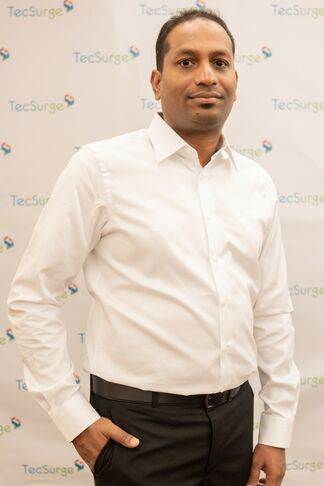Data Migration for Digital Assets
By Raghu Krishnamoorthy
Singapore, February 2nd, 2024. For over a decade now, TecSurge has been delivering plant model migration projects for our clients in the process plant industry. Our first major migration project was from PDS to SmartPlant 3D in 2013, resulting in 100% intelligent data migration, including piping isometric and general arrangement drawings. Since then, we have completed many migration projects from or to formats such as CADWorx, OpenPlant, PDMS/E3D, AutoCAD Plant 3D, PDS and Smart 3D. You name it, we’ve done it, and we can do it for you too!

Raghu Krishnamoorthy, Chief Operating Officer for TecSurge, is based in Singapore. Prior to joining TecSurge, Raghu worked with CAXperts and JGC. He has extensive experience across the full range of Engineering Applications.
Requirements for plant model migration typically arise from:
- Plant owners interested in:
- Existing asset maintenance: These assets comprise CAD drawings, 3D models, documentation, specifications, and more.
- Digitalization: The digitization of plant engineering information involves complex interrelated data sets, specialized application software, legacy data and systems, and a range of inputs of differing quality.
- EPC companies at specific stages of project execution:
- After detailed engineering: providing services for engineering data and software.
- During the detail engineering phases (60%, 90%, As built): TecSurge delivers a fully intelligent, high fidelity 3D model representing the as-is state of the plant, by using all available inputs including existing model data, existing drawings & documentation, and point clouds and photographs captured by laser scanning.
- FEED - Front End Engineering and Design: dominated by our service efficiency.
- Equipment package vendors supplying to capital projects, where the project has mandated delivery in intelligent application formats which are impractical for the vendor to adopt internally.
Our unique approach for migration includes the use of our own custom designed and developed plant model migration automation toolkit. This toolkit enables data translation and anomaly detection and optimization. Creating the toolkit in-house gives us the flexibility to optimize the logic for each project as needed, ensuring we can adapt to changing requirements, and capture improvements over time.
For any aspects of the migration process which can’t be effectively automated, we rely on our team of experienced designers to fill in the gaps using manual modelling methods, and again using our automation toolkit to perform comparison-based quality checking.
The human involvement also gives us the opportunity to perform comparison and back-modelling, incorporating information from other information sources, such as laser scan point cloud data and document and drawing mark-ups, where the source 3D model may be incomplete or inaccurate. Where applicable, this delivers an as-is representation of the plant for a lower cost and more quickly than if the migration and as-building activities are performed separately.
Our time-tested approach to plant model migration results in a full-fidelity result which is nearly indistinguishable from a model which is created manually, delivered on time, and for an affordable cost.
If you are interested to discuss what we can achieve working together, please leave a comment below or contact us today.